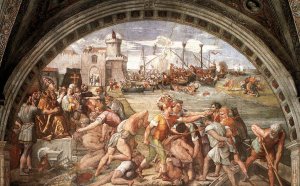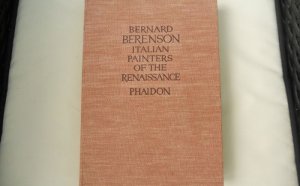![Architecture[edit]](http://www.art-holiday.com//img/spanish_renaissance_wikipedia_the_free.jpg)
Images of the Renaissance period
A Madonna (Italian: ) is a representation of Mary, either alone or with her Child Jesus. These images are central icons for both the Catholic & Orthodox churches. The word is from Italian ma donna, meaning "my lady". No image permeates Christian art as much as the image of the Madonna and child.
While Mary may be referred to as "the Madonna" in other contexts, in art the term is applied specifically to an artwork in which Mary, with or without the infant Jesus, is the focus, and central figure of the picture. Mary and the infant Jesus may be surrounded by adoring angels or worshiping saints. Images that have a narrative content, including those of the many scenes which make up the, are not correctly referred to as "Madonnas" but are given a title that reflects the scene such as the .
The earliest images date from the Early Christian Church and are found in the Catacombs of Rome. Representation of Mary became more common after she was proclaimed "God-bearer" at the Council of Ephesus in 431. For over a thousand years, through the Byzantine, Medieval and Early Renaissance periods the Madonna was the most often produced pictorial artwork. Many specific images of the Madonna, both painted and sculptured, have achieved fame, either as objects of religious veneration or for their intrinsic artistic qualities. Many of the most renowned painters and sculptors in the history of art have turned their skills toward the creation of Madonna images. These artists include Duccio, Leonardo da Vinci, Michelangelo, Raphael, Giovanni Bellini, Caravaggio, Rubens, Salvador Dalí and Henry Moore.
Terminology[edit]
"Madonna", pronounced , is a medieval Italian term for a noble or otherwise important woman, and has long been used commonly in reference to images of the Virgin Mary. The word has also been adopted by the English and other European languages. "Madonna", translates as "my lady". While stressing the personal, if reverent relationship between the Virgin and the devout Christian who addresses her in prayer, it is comparable to the French, "Notre Dame", or "Our Lady".
These names signal both the increased importance of the cult of the virgin and the prominence of art in service to Marian devotion during the late medieval period. During the 13th century, especially, with the increasing influence of chivalry and aristocratic culture on poetry, song and the visual arts, the Madonna is represented as the queen of Heaven, often enthroned. Madonna was meant more to remind people of the theological concept which is placing such a high value on purity or virginity. This is also represented by the color of her clothing. The color blue symbolized purity, virginity, and royalty.
Strictly speaking, the term "Madonna" should be used exclusively for Italian works, but has become applied much more widely. It is often applied to the same work of art alternately with the title "Virgin". An image in which Mary is depicted with the Christ Child, may be called a "Madonna and Child", but is often loosely referred to as a "Madonna".
YOU MIGHT ALSO LIKE



Share this Post
Related posts
Paintings of the Renaissance period
We all know what the Renaissance was, correct? Michelangelo, Leonardo, Raphael and company created some fabulous paintings…
Read MoreItalian Painters of the Renaissance
Many see pictures without knowing what to look at. They are asked to admire works of pretended art and they do not know enough…
Read More





